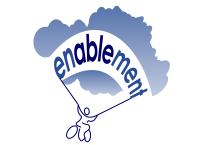Diagnosis of Cerebral Palsy: Difference between revisions
Michelle Lee (talk | contribs) No edit summary |
Michelle Lee (talk | contribs) No edit summary |
||
| Line 23: | Line 23: | ||
There are guidelines on when infants and children should meet developmental milestones which are usually monitored by health care professionals, so if achievement of a milestone is late this can indicate a reason for motitoring. For more information on developmental milestones have a look at this page. | There are guidelines on when infants and children should meet developmental milestones which are usually monitored by health care professionals, so if achievement of a milestone is late this can indicate a reason for motitoring. For more information on developmental milestones have a look at this page. | ||
=== What parents may identify === | === What parents may identify === | ||
The primary indicators parents will notice are developmental delay and impaired muscle tone. Developmental delays occurs when a child does not develop specific skills within the predicted time period. If parents are worried about the development of their child it is important to take them seriously. Young babies may show some of these signs: | |||
*Stiffness | |||
*Floppiness | |||
*Slow development | |||
*Poor feeding | |||
*Unusual behaviour | |||
=== | === What professionals may observe === | ||
Professionals should use the input of the parents as basis for further examinations (history or assessment). In the case of cerebral palsy, developmental motor delay is a key indicator. The professional should evaluate: | |||
*Muscle tone | |||
*Movement coordination and control | |||
*Reflex irregularity | |||
*Posture | |||
*Balance | |||
*Fine motor function | |||
*Gross motor function | |||
*Oromotor function<br> | |||
To find out more about normal development [http://www.physio-pedia.com/Normal_Development see this page.] | |||
=== Medical History === | |||
=== Medical Examination === | |||
[[Category:Cerebral_Palsy]] | [[Category:Cerebral_Palsy]] | ||
Revision as of 16:00, 3 August 2016
Top Contributors - Michelle Lee, Laura Ritchie, Naomi O'Reilly, Roelie Wolting, Kim Jackson, Admin, Simisola Ajeyalemi, Jess Bell, Evan Thomas, Rucha Gadgil and Amanda Ager
Introduction
[edit | edit source]
The information on this page has developed for you from the expert work of Roelie Wolting alongside the Enablement Cerebral Palsy Project and Handicap International Group.
Diagnosis[edit | edit source]
Diagnosing cerebral palsy takes time, and is usually not made until the brain is fully developed, the age of a child when diagnosed can vary between the ages of two to five years old. Exceptions do exist, but this is usually in severe cases when the child may be diagnosed soon after birth. Although in general the average age of diagnosis for a child with spastic diplegia, a very common form of cerebral palsy, is 18 months.
There are no definitive tests that confirms or rules out cerebral palsy. The process of diagnosing cerebral palsy involves monitoring the child's development and watching for possible signs of impairment. Often, parents are first to notice their child has missed one of the age-appropriate developmental milestones, like rolling, crawling, sitting and walking. In many countries there is are systems of monitoring the growth, development and health of children under 5 year. This may be where the first signs are cerebral palsy are identified.
Indications for motitoring[edit | edit source]
There are guidelines on when infants and children should meet developmental milestones which are usually monitored by health care professionals, so if achievement of a milestone is late this can indicate a reason for motitoring. For more information on developmental milestones have a look at this page.
What parents may identify[edit | edit source]
The primary indicators parents will notice are developmental delay and impaired muscle tone. Developmental delays occurs when a child does not develop specific skills within the predicted time period. If parents are worried about the development of their child it is important to take them seriously. Young babies may show some of these signs:
- Stiffness
- Floppiness
- Slow development
- Poor feeding
- Unusual behaviour
What professionals may observe[edit | edit source]
Professionals should use the input of the parents as basis for further examinations (history or assessment). In the case of cerebral palsy, developmental motor delay is a key indicator. The professional should evaluate:
- Muscle tone
- Movement coordination and control
- Reflex irregularity
- Posture
- Balance
- Fine motor function
- Gross motor function
- Oromotor function
To find out more about normal development see this page.









